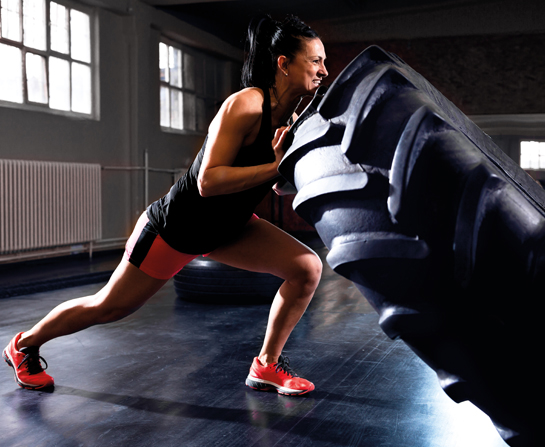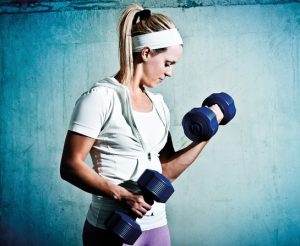The Sweetest Sorrows: Inspired & Staying Motivated
April 29, 2022 Return
Like every person with diabetes, surely you want to stay healthy. However, it can be challenging to change your lifestyle. To manage type 2 diabetes, you will need to unlearn habits that contributed to this condition, adopt new habits and continue to apply these changes to your life every day. This can be easier said and done, but it is possible.
Think positive
The right attitude keeps you motivated during challenging times.
- View your diagnosis as an opportunity to step up your healthy lifestyle and get rid of bad habits that are holding you back.
- Focus on the benefits you will get from these adjustments (better health, improved sleep, healthier weight, etc).
Know diabetes well
Understanding your condition and how you can control it will give you the confidence to take charge of your health and do what is best for you.
- Read up on type 2 diabetes online or in books, and talk to doctors and dietitians to clarify your doubts and concerns.
- Be careful of misperceptions and false information, though. Always check with your healthcare team if you are unsure.
Make your goals
- Make long-term goals to give yourself a sense of direction as well as purpose. These could be lowering your blood glucose below a certain value, or spending more hours each day being physically active.
- Also make short-term goals as you strive to meet your long-term goals. For example, you may want to lose 5 kg by the end of two months. Succeeding in your short-term goals will motivate you to keep going as you strive to achieve your long-term goals.
- Give yourself a treat each time you meet a goal.
Be realistic
- When setting goals or making plans to adopt a healthy habit, make sure that they are achievable within the time frame you have set for yourself. Otherwise, you are only setting yourself up for failure and disappointment!
- Adopting new habits and breaking old habits may take time, so make changes gradually.
- For example, if you did not eat fruits and vegetables often in the past and you now want to include more in your plans, you may not be able to quickly adopt a full vegetarian diet. It may be better to instead include a vegetable side dish and a fruit during every main meal, and slowly increase the amount over time.
Can’t enjoy your meals?
You may find yourself missing your old favourite (but unhealthy) meals, or you may need some time to get used to your new diet. Here are some tips to help make your mealtimes enjoyable again.
- Get your whole family involved. Healthy, balanced meals with less salt and fats are good for everyone, not just people with diabetes!
- There are many recipes online only that will show you how to prepare simple and quick, yet delicious meals that are great for people with diabetes. Try them out!
- You can also exchange recipes and cooking tips with other people with diabetes in support groups both online and in real life.
- Another benefit to creating your own tasty diabetes-friendly meals is that you will rely less on diabetes-friendly foods and snacks sold in stores, which can be quite costly.
- There are many free apps you can download into your phone to make it easier to keep track of your blood glucose, calories and more. They will help make your mealtimes less complex and, hence, more easy to enjoy!
No motivation to exercise?
Often, “I’m too busy to exercise!” or “I am too tired!” is all in your mind. If you really want to, you can spend a healthy part of the day being physically active.
- If you are still getting used to your new routine, make the effort to wake up earlier to exercise the first thing in the morning. Better get it out of the way before you start coming up with excuses to put it off!
- If you feel self-conscious about your appearance, or you don’t know how to start, find an exercise buddy to help you out. Having an exercise buddy is also good because the two of you can motivate one another.
- If you are not fond of exercising with other people, you can exercise at home by following instructional videos (on YouTube and other sources) on yoga, aerobics and more.
- If you need extra motivation (and who doesn’t?), there are a variety of free apps you can download on your phone. There are apps to help you keep track of your physical activity, send motivational messages regularly and even make physical activity a fun game that puts you in competition with other users. Getting physically active is now easier, and more fun, than ever!
Oops, slipped up?
You may find yourself backtracking to your old habits, sometimes without realizing it until it is too late.
- Don’t give up if this happens. Slipping up only means that you are human like everyone else!
- Once you realize that you have slipped up, think back to the circumstances that might have led to this slip-up, and plan on either how to avoid falling into such circumstances again or, failing that, what you can do to avoid giving in to temptation when it arises.
- If you find yourself slipping up often, it is time to revisit your goals. How can you motivate yourself again? Perhaps it is time to come up with new goals, or a new approach to reach your goals. You can consult your healthcare team or support group if you need further advice.
Keep track of medications
- If you have a hard time keeping track of whether you have taken your medications (especially when you have to take several of them), you can either get a pill case or download a phone app that can help remind you to take your medications.
- You should take your medications even when you are feeling healthy, and discuss with your doctor or pharmacist before taking any complementary medicine. Remember that complementary medicine should not replace your current medications.
- Also, keep your medical appointments, as they allow your doctor to monitor your health and conduct necessary tests to detect signs of diabetes-related complications.
- Don’t forget: get an eye screening test with an ophthalmologist once a year! This will help detect diabetic retinopathy and other diabetes-related eye diseases.
The closing word
We hope this Special Report has shed some light onto some lesser-well known pitfalls of type 2 diabetes, and we have motivated you to take those important steps to take charge of your health.
Living with type 2 diabetes often means having to deal with increased risks of other health conditions, such as diabetic retinopathy and dyslipidaemia, but this does not mean that your future is bleak.
With proper lifestyle adjustments, medications and the right attitude, you can still lead a healthy and fulfilling life. The journey may seem daunting from where you stand right now, but you can do it. And the good thing is, you won’t be alone in your efforts. Remember, your healthcare team will be there every step of the journey. You also have your family and friends. Furthermore, in this time and age, there are fellow people with diabetes whom you can get in touch with through Facebook, Twitter, WhatsApp, Instagram and more. Thanks to modern technology, physical distance is no longer an issue. You are never alone even in your most trying time.
As Olympic track star Jim Ryun said, “Motivation is what gets you started. Habit is what keeps you going.” There is plenty of motivation if you know where to look, and we hope you can find yours to get those healthy habits in place for you to keep going. Good luck and best of health to you!
If you like this article, do subscribe here.








